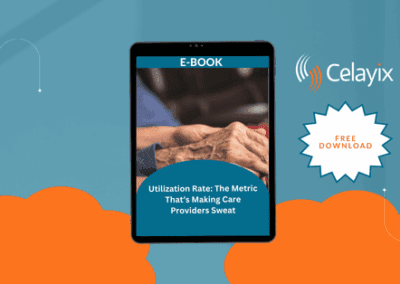A recent study by Jessica Nye, PhD, highlighted a crucial issue that many employers often overlook—the severe health consequences of improper shift scheduling. The results show that shift work, especially in irregular patterns such as rotating and evening shifts, increases the risk of circadian syndrome. This condition is more than just disrupted sleep; it’s a combination of poor sleep, depressive symptoms, and metabolic disruptions that can seriously impact a worker’s long-term health and productivity.
The most important takeaway is this: improper scheduling has real, measurable health consequences. Companies may be more focused on maintaining operations and covering shifts, but the human cost of poor scheduling is significant.
Here’s why implementing a proper scheduling system is more important now than ever:
1. Mitigating Health Risks for Workers:
The data shows that circadian syndrome is strongly associated with irregular schedules, like rotating and evening shifts. Workers on these schedules are 1.7 to 1.84 times more likely to develop circadian syndrome than those with regular daytime shifts. This is a clear indication that consistent and predictable scheduling could drastically reduce health risks.
A proper scheduling system helps create predictable work patterns, minimizing unnecessary shift rotation. It allows businesses to ensure that no employee is overburdened with disruptive evening or rotating shifts, thereby lowering the risk of developing circadian syndrome. The current practice of throwing workers into random, irregular shifts not only wears them down but compromises their health in the long run.
2. Optimizing Night Shifts:
Interestingly, the study found no significant increase in the risk of circadian syndrome for night workers when their shifts were consistent. This highlights the importance of regularity—it’s not just about avoiding night shifts altogether, but about managing how often workers are switched between day and night shifts.
A scheduling system can help night workers keep a regular routine. This allows them to adjust their sleep patterns. It also prevents the sleep problems caused by changing schedules.
3. Addressing Demographic Risks:
The study shows that certain groups—men, women, younger workers, and individuals with higher income-to-poverty ratios—are at an increased risk for circadian syndrome if exposed to shift work. Employers can use a scheduling system to tailor shifts that accommodate individual employee needs and minimize risks, especially for those more vulnerable groups.
For example, younger workers who may be prone to burnout from erratic schedules can be given shifts that are more stable, improving their health outcomes.
4. Reducing Depressive Symptoms and Mental Health Issues:
The combination of irregular shifts and poor sleep has a profound effect on mental health, contributing to depressive symptoms. A good scheduling system ensures employees are not constantly adjusting their body clocks and can maintain a routine, reducing the likelihood of depression and the resultant loss in productivity.
Companies that don’t prioritize worker well-being are likely to see higher absenteeism, turnover, and disengagement. Poor mental health leads to disengaged workers who are less productive, and over time, businesses lose more than just hours—they lose talent and loyalty.
5. Efficiency vs. Health—A False Tradeoff:
Many employers think juggling schedules last minute or forcing workers into “available” time slots is just part of running a business. But the long-term health consequences of irregular schedules as seen in this study are far more costly. Using a sophisticated scheduling system allows companies to maintain the operational flexibility they need while simultaneously protecting their workforce from health risks. The balance between flexibility and regularity that a good scheduling system can offer prevents the detrimental health impacts caused by chaotic, unplanned shifts.
6. No More Guesswork:
The study shows that shift work is a health risk that cannot be ignored. It isn’t something that can be addressed by throwing together schedules manually or hoping workers can “adapt.” A proper scheduling system provides evidence-based decision-making tools that can help optimize work hours without compromising employee health. It can assign shifts fairly, ensure adequate time for rest and recovery, and avoid the pitfalls of manual or ad-hoc scheduling methods.
7. Long-Term Cost Savings:
The financial implications of neglecting proper scheduling systems are enormous. Circadian syndrome and other health problems lead to higher healthcare costs, absenteeism, and turnover. On the other hand, an automated scheduling system may have upfront costs, but it ensures workers stay healthy and engaged, which in turn reduces long-term expenditures related to health and workforce management.
8. Empowering Employees:
Scheduling systems often come with features that allow employees to have more control over their shifts. Workers can swap shifts easily or request certain days off in advance, leading to more balanced, predictable work-life schedules. This reduces stress and allows them to manage their own health better, cutting down on the health risks associated with unpredictable schedules.
At Celayix, we have pioneered with our own features: Self-scheduling and Shift Bidding. Our scheduling software has the capability to create open shifts in your workforce schedule. Managers can assign these shifts for self-scheduling or shift-bidding, allowing employees to input their willingness to take the shifts.
Conclusion:
In light of this study, it’s clear that scheduling isn’t just a logistical issue—it’s a health issue. A proper scheduling system is no longer a luxury or an operational tool—it’s a necessity. Without one, companies are directly contributing to poor health outcomes for their workers, which will inevitably affect their bottom line. Structured, predictable schedules can help prevent the onset of circadian syndrome, improve employee well-being, and maintain productivity.
Employers who continue to neglect this are not only risking the health of their employees but also their own business sustainability in the long run.
Summary of the Study by Jessica Nye, PhD
Shift Work Types:
- Rotating shifts (where workers change their hours, often alternating between days, evenings, and nights) made up 30.95% of all shift workers.
- Regular evening shifts (set work hours in the evening) were common for 21.65% of shift workers.
- Regular night shifts (where workers only work nights) accounted for 15.69%.
- Other schedules (which don’t fit into the traditional categories of day, evening, or night shifts) covered 31.71% of shift workers.
Prevalence of Health Syndromes:
- 37.27% of all participants had metabolic syndrome. This is a condition linked to higher risks of heart disease, stroke, and diabetes.
- 22.26% had circadian syndrome, which is tied to poor sleep, depression, and metabolic issues from disrupted biological rhythms.
Key Findings:
Shift work was shown to increase the risk of circadian syndrome by about 57% (adjusted odds ratio, 1.57). This means that people working shifts were 1.57 times more likely to develop circadian syndrome compared to those with regular day shifts. This result is highly reliable, with a 95% confidence interval between 1.23 and 2.01, and the likelihood of this being a chance finding is very low (P < .001).
However, there was no increased risk for metabolic syndrome due to shift work. The odds ratio was 1.04, meaning no significant difference between shift workers and regular day workers for this condition, with a 95% confidence interval ranging from 0.78 to 1.40. The P-value of .78 shows this finding is not statistically significant.
Work Schedule Breakdown:
When breaking down the different types of shift work, the risk of circadian syndrome varied:
- Regular evening shifts increased the risk by 84% (adjusted odds ratio, 1.84), meaning evening workers were almost twice as likely to develop circadian syndrome compared to daytime workers. The result was statistically significant (P = .02).
- Rotating shifts increased the risk by 70% (adjusted odds ratio, 1.70), showing another substantial risk for people who frequently switch between different shifts (P = .01).
- Other irregular schedules also showed an increased risk of about 64% (adjusted odds ratio, 1.64), indicating that unstructured or unusual work schedules can negatively impact health (P = .01).
- In contrast, regular night shifts (working set hours during the night) did not significantly increase the risk for circadian syndrome. The odds ratio was 0.95, showing no significant effect, and the P-value of .87 confirms this result wasn’t meaningful.
Lastly, the study found no clear link between any specific type of shift work and metabolic syndrome. So, while shift work impacts circadian health, it doesn’t seem to be a direct cause of metabolic problems like diabetes or heart disease.




